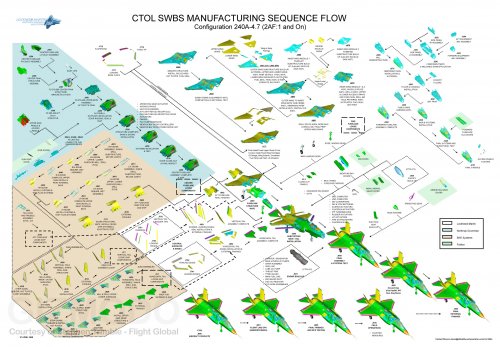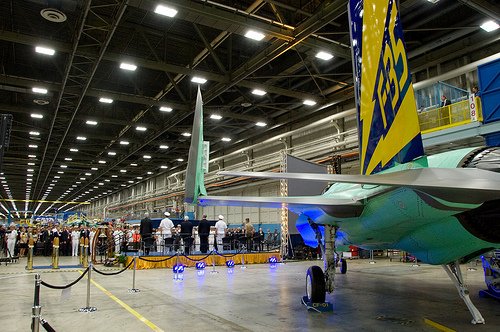What about the sudden stall problem at high alpha, have you heard anything about that as mentioned in the article I posted above? From the article;
Quote
One source suggests that JSF may be running into high-angle-of-attack handling problems including “abrupt stall.” Lockheed Martin says that tests have allowed the designers to prevent such a problem “by incorporating design elements and developing fallback options, should the phenomenon appear during flight testing.”
Early F-35Cs will have spoilers on the outboard wing panels as risk mitigation during flight testing. F-18E/F and T-45 both experienced wing drop during flight testing and both platforms were subsequently fixed. If no problems are found in flight testing then the spoilers will be removed for production. This has nothing to do with F-35A or B.
http://www.flightglobal.com/articles/2009/08/05/330590/lockheed-martin-develops-wing-spoiler-for-f-35c-flight.html
This might be a stupid question, but why are they redesigning so much from the X-35? What's the point of producing a flying prototype if you're going to build a completely different production machine?
X-35 was a technology demonstrator not a prototype. The prototype would have been YF-35.
F-35C not strong enough for catapult stresses. What a joke.
In general, airplane design is an iterative process. You never get it right the first time. When parts are designed, assumptions are made about the loads that the parts need to take. The most structurally efficient design will be just strong enough to meet those assumptions. Later, because of requirements creep or during flight testing, the actual loads may be found to be higher than the assumed loads. Then your just strong enough part becomes not strong enough. In such cases the parts are either swapped, reinforced, or life limited or flight envelope restrictions are put on the airplane. Parts get redesigned to a newer, more accurate set of assumptions and get incorporated into future birds. This is not unusual. In happens in every program.
If a brand new airplane design completes flight testing and no structural mods were needed then someone did their job wrong. That would indicate that there is extra weight that could be removed from the design.


